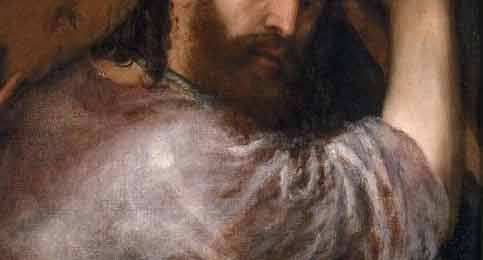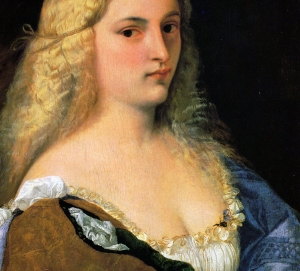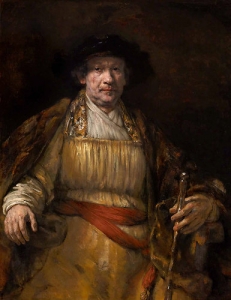The Venetian Method: Glazing and Scumbling

“Glazing” in relation to the Venetian Method refers to the application of a darker transparent paint over a lighter area. Doing so causes light rays to pass through a transparent darker layer, bouncing off the lighter surface underneath, then returning to the viewer’s eyes, and was useful in creating subtle optical illusions. Only the Renaissance practice of glazing can produce this particular effect, one which results in the look of a warm glow and more saturated colours than the same pigment could achieve if applied more thickly and opaquely.
Modern methods, with their more opaque results, lose a sense of distance when one is looking at shadows. Rembrandt’s glowing and rich dark browns owe their origins to this Venetian Method and the artists, such as Titian, who developed it. Rembrandt was said to have at one time owned at least one of Titian’s paintings.
Glazed darks appear darker than their more opaque modern brethren due to the way light rays are allowed to penetrate more deeply into the paint layer, which filters the light before it hits the viewer. This actually compensates for the fact that it is impossible to achieve, with paint itself, a white that is as bright as light is in nature. The Old Masters effectively wielded darks and made great use of them in the aim of creating as wide a range of values as possible, layering their darks with a great deal of transparency to entice and manipulate light. As light is the origin of all colour, the artist must paint all highlights darker than white in order to include colour in them, which limits the value range artists have to work with even more, and necessitates the use of darker darks in order to create enough contrast for a visually arresting image. Transparent darks created a much greater richness and variety in the range artists had available to them while working with darks.
Scumbling, on the other hand, is rather like the antithesis of glazing.
 A scumble relies on lighter opaque paint, spread thinly enough to give a translucent effect when applied over a darker passage. The darks below the light paint in this instance make the light areas appear more blue (as they show through the lighter layer), which is a wonderful means of softening surface textures. The beautiful fabric in Renaissance art owes its look to this method, which was ideal for soft cloth, youthful complexions, fruit, flowers, trees, and so on. It was also perfect for indicating atmospheric haze shrouding distant landscapes and gradating the sky near the horizon. Overcast skies, too, may be scumbled in order to show the “silver lining” of light between clouds.
A scumble relies on lighter opaque paint, spread thinly enough to give a translucent effect when applied over a darker passage. The darks below the light paint in this instance make the light areas appear more blue (as they show through the lighter layer), which is a wonderful means of softening surface textures. The beautiful fabric in Renaissance art owes its look to this method, which was ideal for soft cloth, youthful complexions, fruit, flowers, trees, and so on. It was also perfect for indicating atmospheric haze shrouding distant landscapes and gradating the sky near the horizon. Overcast skies, too, may be scumbled in order to show the “silver lining” of light between clouds.
The Venetian Technique only became more intricate and advanced as it was built upon by the artists who so loved it. Effects such as “semiglaze“, which can be either transparent or semiopaque, or anywhere in between, came to be developed also during this period. Semiglaze is a very thin layer of colour applied to an area of the same value as the paint being currently used. This changes the color of a given area after that area is dry—think of subtle highlights on skin, or the gentle application of blush to a lady’s cheek—and/or permits subsequent wet into wet painting over an area of paint which had to be allowed to dry during a previous session. This could be applied to soften transitions of tone from the previous sitting that had dried to appear too harsh, refining the overall image and enhancing the softness of it. The paint can be applied via scrubbing with a stiff brush (in a very thin layer) overtop of a small amount of oil or painting medium, which is essential to lubricate the dry surface below and allow the paint to flow properly. Titian is said to have sometimes applied such techniques with his fingers, though it is perhaps more likely that he was merely wiping away excess from his brush. Stippling with a flat tipped brush is another useful method for applying glazes, scumbles, and semiglazes, but truly, there are a great range of methods which work equally well with the right application of skill.





This Post Has 0 Comments